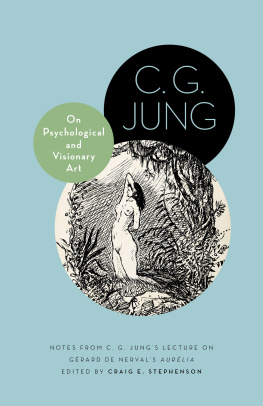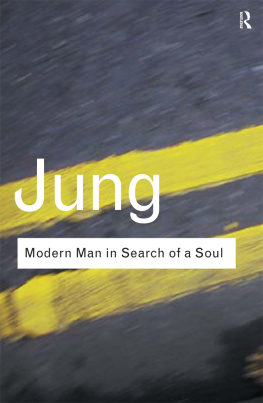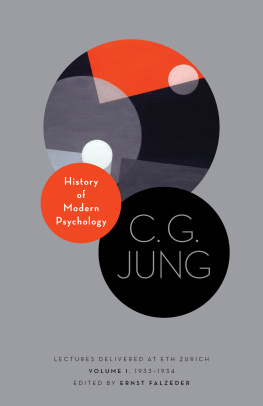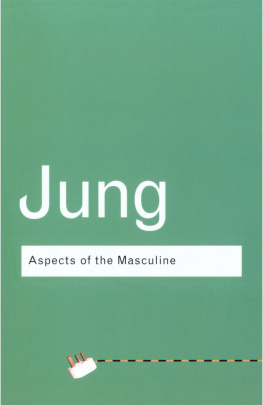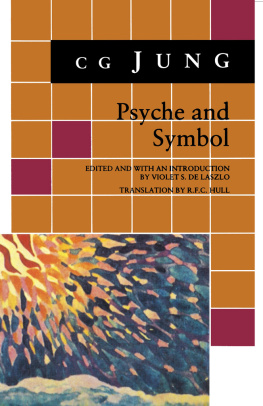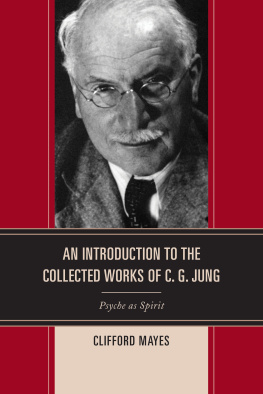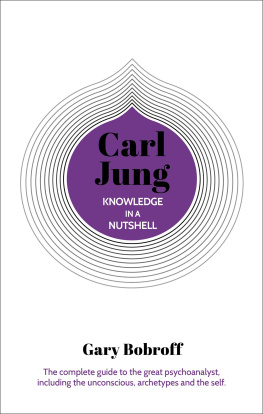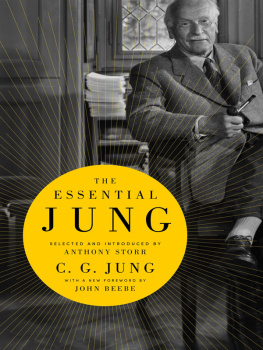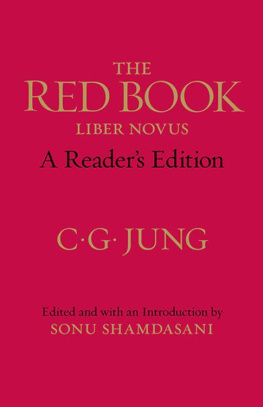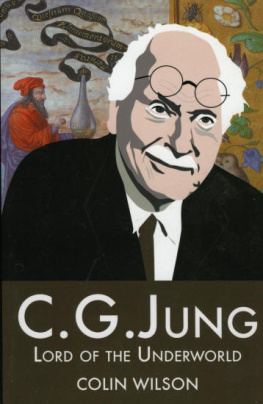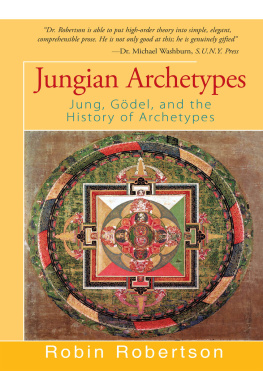FOUR ARCHETYPES

from
The Collected Works of C. G. Jung
VOLUME 9, PART I
BOLLINGEN SERIES XX
FOUR ARCHETYPES
Mother
Rebirth
Spirit
Trickster
C. G. Jung
With a new foreword by
Sonu Shamdasani
Translated by R.F.C. Hull

BOLLINGEN SERIES

COPYRIGHT 1959, 1969 BY BOLLINGEN FOUNDATION
FOREWORD TO THE 2010 EDITION COPYRIGHT 2011
BY SONU SHAMDASANI
PUBLISHED BY PRINCETON UNIVERSITY PRESS, 41 WILLIAM STREET,
PRINCETON, NEW JERSEY 08540
PRESS.PRINCETON.EDU
ALL RIGHTS RESERVED
First Princeton/Bollingen Paperback Edition, 1970
Paperback reissue, with a new foreword by Sonu Shamdasani, 2010
Extracted from The Archetypes and the Collective Unconscious, Vol. 9, part I, of the Collected Works of C. G. Jung. All the volumes comprising the Collected Works constitute number XX in Bollingen Series, under the editorship of Herbert Read, Michael Fordham, and Gerhard Adler; executive editor, William McGuire.
LIBRARY OF CONGRESS CONTROL NUMBER: 2010934718
ISBN: 978-0-691-15049-9
Printed on acid-free paper.
Printed in the United States of America
1 3 5 7 9 10 8 6 4 2
TABLE OF CONTENTS
Translated from Die psychologischen Aspekte des Mutter-Archetypus, Von den Wurzeln des Bewusstseins (Zurich: Rascher, 1954).
Translated from ber Wiedergeburt, Gestaltungen des Unbewussten (Zurich: Rascher, 1950).
Translated from Zur Phnomenologie des Geistes im Mrchen, Symbolik des Geistes (Zurich: Rascher, 1948).
Translated from part 5 of Der Gttliche Schelm, by Paul Radin, with commentaries by C. G. Jung and Karl Kernyi (Zurich: Rhein-Verlag, 1954).
FOREWORD TO THE 2010 EDITION
READING JUNG AFTER THE RED BOOK
With the publication of Liber NovusJungs Red Booka new chapter opens in the reading of Jungs works. For the first time, one is in a position to grasp the constitution of Jungs work from 1914 onward, and to trace the intimate connections between his self-experimentation and his attempts to determine the typical features of this process through his work with his patients and translate his insights into a language acceptable to a medical and scientific public. Thus, reading Liber Novus brings with it the task of rereading Jungs Collected Worksmuch of which appears in a wholly new light.
In the winter of 1913, Jung embarked on a process of self-experimentation. He deliberately gave free rein to his fantasy thinking and carefully noted what ensued. He later called this process active imagination. He wrote down these fantasies in the Black Books. These are not personal diaries, but rather the records of a self-experimentation. The dialogues that form these active imaginations can be regarded as a type of thinking in a dramatic form.
When World War I broke out, Jung considered that a number of his fantasies were precognitions of this event. This led him to compose the first draft of Liber Novus, which consisted of a transcription of the main fantasies from the Black Books, together with a layer of interpretive commentaries and lyrical elaboration. Here Jung attempted to derive general psychological principles from the fantasies, as well as to understand to what extent the events portrayed in the fantasies presented, in a symbolic form, developments that were to occur in the world.
Jung recopied the manuscript in an ornate Gothic script into a large red leather folio volume, which he illustrated with his own paintings. The overall theme of the book is how Jung regains his soul and overcomes the contemporary malaise of spiritual alienation. This is ultimately achieved by enabling the rebirth of a new image of God in his soul and developing a new worldview in the form of a psychological and theological cosmology.
Between 1916 and 1928, Jung published a number of works in which he attempted to translate some of the themes of Liber Novus into contemporary psychological language. In 1928, the sinologist Richard Wilhelm sent him a copy of the Taoist alchemical treatise The Secret of the Golden Flower, inviting him to write a commentary. Struck by the parallelism between the imagery of the text and some of his own mandalas, Jung finally decided to set aside his work on Liber Novus and not publish it. Instead he devoted himself to the cross-cultural study of the individuation process, focusing on medieval alchemy in particular, using parallels with his own material as a means to present the process in an indirect and allegorical form. Until now, this has presented formidable challenges for readers outside of Jungs inner circle.
FOUR ARCHETYPES
In his major 1912 work, Transformations and Symbols of the Libido, Philemon, a figure from classical myth and literature, in turn becomes Jungs guide, his guru, and then the wise old man and archetype of the spiritthis sequence links Jungs own fantasies, his reflections upon them, and how this led him to formulate new conceptions of general psychological functioning. Similar connections run through the other papers in this volume.
C. G. Jung, The Red Book, edited and introduced by Sonu Shamdasani and translated by Mark Kyburz, John Peck, and Sonu Shamdasani, Philemon Series (New York: W. W. Norton, 2009).
Collected Works B.
The Red Book, p. 262.
Ibid.
The German word Geist has no exact equivalent in English and, depending on context, can be rendered by spirit or mind.
See 398, pp. 9395.
The Red Book, pp. 245, 251.
See 399, p. 95, and 402, pp. 9697.
The Red Book, p. 336.
FOUR ARCHETYPES
The hypothesis of a collective unconscious belongs to the class of ideas that people at first find strange but soon come to possess and use as familiar conceptions. This has been the case with the concept of the unconscious in general. After the philosophical idea of the unconscious, in the form presented chiefly by Carus and von Hartmann, had gone down under the overwhelming wave of materialism and empiricism, leaving hardly a ripple behind it, it gradually reappeared in the scientific domain of medical psychology.
At first the concept of the unconscious was limited to denoting the state of repressed or forgotten contents. Even with Freud, who makes the unconsciousat least metaphoricallytake the stage as the acting subject, it is really nothing but the gathering place of forgotten and repressed contents, and has a functional significance thanks only to these. For Freud, accordingly, the unconscious is of an exclusively personal nature, although he was aware of its archaic and mythological thought-forms.
A more or less superficial layer of the unconscious is undoubtedly personal. I call it the personal unconscious. But this personal unconscious rests upon a deeper layer, which does not derive from personal experience and is not a personal acquisition but is inborn. This deeper layer I call the collective unconscious. I have chosen the term collective because this part of the unconscious is not individual but universal; in contrast to the personal psyche, it has contents and modes of behaviour that are more or less the same everywhere and in all individuals. It is, in other words, identical in all men and thus constitutes a common psychic substrate of a suprapersonal nature which is present in every one of us.
Next page

